Description
Superpave Mix Design and Laboratory Testing of Rubber Modified Asphalt Mixtures
Janak Shah, Aswin Srinivasan, Kamil Kaloush
ABSTRACT: Crumb rubber use in asphalt mixtures through wet process technology has been in place for decades with good performance record; however, it has some shortcomings such as high mixing and compaction temperatures. Pre-treated crumb rubber technologies are emerging as a robust method to produce asphalt rubber mixtures in the field. A crumb rubber modifier industrially known as Reacted and Activated Rubber (RAR) is one such technology. RAR acts like an enhanced elastomeric asphalt extender to improve the engineering properties of the binder and mixtures. It is intended to be used in a dry mixing process with the purpose of simplifying mixing and final production at the asphalt plant. Another Nanotechnology additive of interest, Organosilane, typically modifies the aggregate structure from hydrophilic to hydrophobic; however, the additive when added to the binder, it modifies the surface tension of the binder resulting in a richer coating at lower compaction and mixing temperatures.
The objective of this research study was to perform a Superpave mix design for determination of optimum asphalt content with 35% RAR by weight of binder, and analyze the performance of RAR modified mixtures against traditional crumb rubber mixtures with and without Organosilane by conducting various laboratory tests. Performance Grade (PG) 64-22 binder was used for this study. Laboratory performance tests included: Dynamic Modulus, Tensile Strength Ratio (TSR), C* Fracture Test (CFT) and the Flow Number test.
Observations from test results indicated that the RAR modified mixtures had better resistance to rutting, moisture, low temperature cracking, and fatigue in comparison to traditional crumb rubber mixes; while the addition of Organosilane facilitated lower compaction and mixing temperatures by 15℃ without sacrificing the mixtures’ mechanical properties. The Organosilane performed equal to the crumb rubber mix without the additive and resulted in better resistance to moisture and rutting due to increased wetting caused by the silane bond.
KEYWORDS: Superpave mix design, Reacted and Activated Rubber, RAR, Crumb Rubber, dry process, wet process, Organosilane.

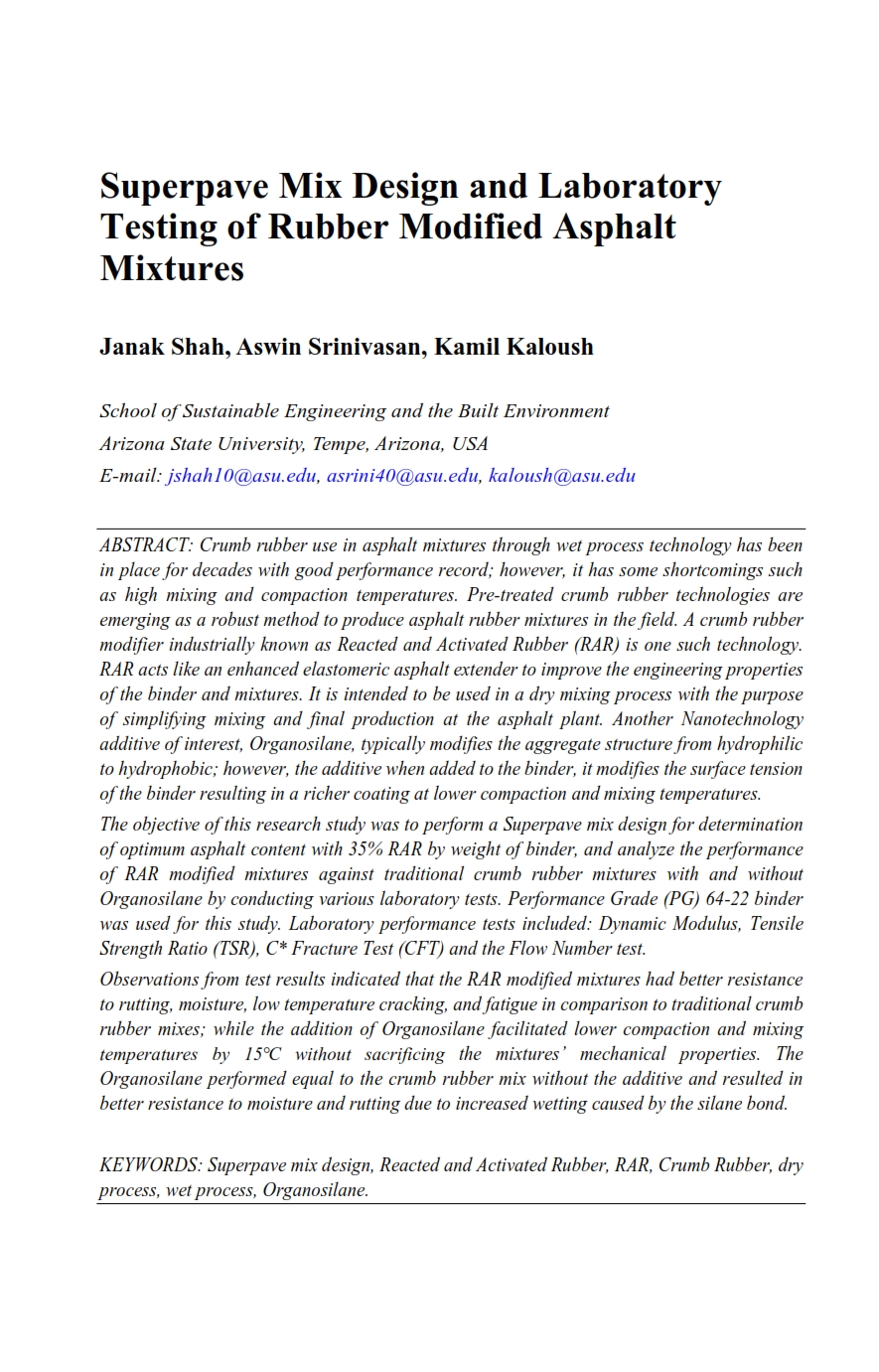
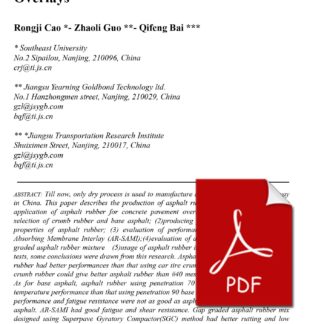
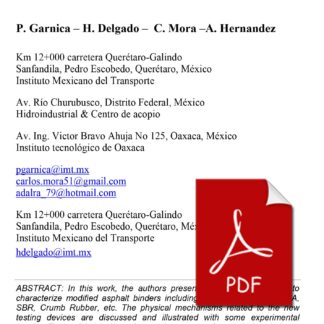
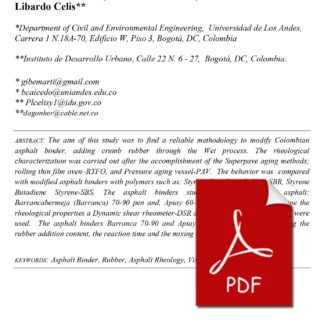


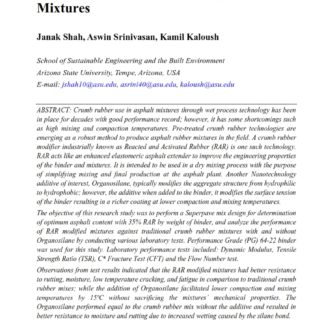
Reviews
There are no reviews yet.